
If you’re designing, renovating or building your family home, getting overwhelmed about your project choices is common.
Get clarity here.
They say you’ll make over 15,000 project choices, or decisions, during a renovation or new build. It’s easy to get confused or know what to do.
These ‘9 things to know about your project choices’ will help you stay focussed, and create the perfect home for you.
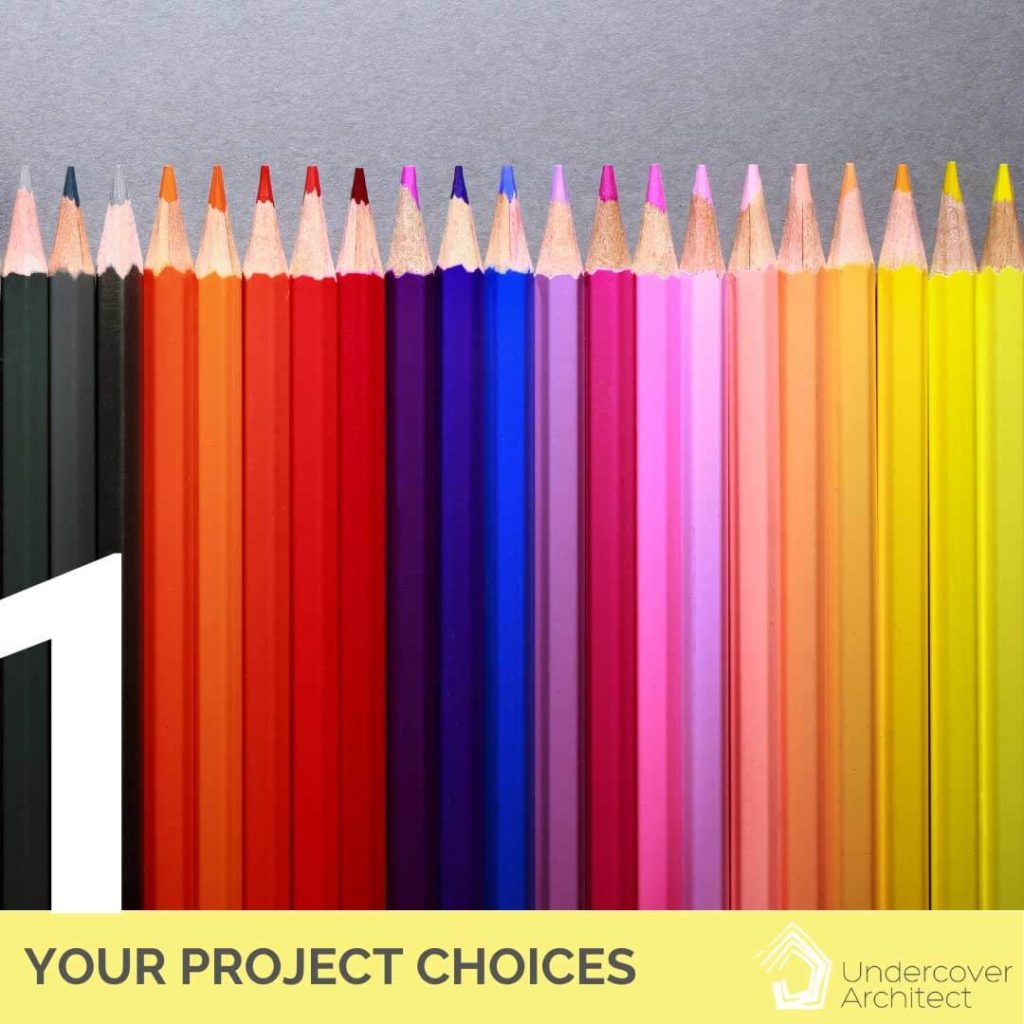
Short term vs long term
I was recently explaining to my kids, (who love binging several episodes of their favourite Netflix series on a Saturday night), that when I was a kid, we had to wait.
We had to wait a week for the next show to come out.
We had to wait months at the end of a season (sometimes a year) for the next season to arrive.
If we missed it, we missed it. Later, we could record it on video – but then had to watch it with all the ads.
“Yes Mum, we know you were born in 3,000 BC.” [Not quite, munchkins – 1973 was a good year]
The world has changed so quickly, that now we are very used to things being on demand. Delayed gratification is a really challenging concept to teach our kids when everything around them says ‘now’.
It can especially be a really challenging concept when you’re building or renovating your home. I see homeowners approaching their projects like it’s the first and last time they’ll ever spend money on their home, and they need to make it the best and biggest and most it can possibly be right now.
As a result, they can often stretch their budget across lots of space, with low quality finishes and products to get them all included. These then create maintenance and cost issues down the track when they deteriorate or break.
For example, I’ve seen homeowners reduce the height of their external windows and doors to afford the much bigger kitchen they want.
It’s a false trade-off – because a kitchen can be added to and upgraded quite simply down the track. Changing windows is a huge undertaking, and fundamentally impacts the efficiency, performance and feel of your home.
We can live in our family homes for a long time, and life changes a lot over that time. And then other families buy them, and things change again.
I suspect that, if you plan to be in your home for 10-15 years (or more) this will not be the last time you spend money on it. As you make your project choices, choose for quality, durability, low maintenance, high function, and feel-good factor.
Make project choices that create flexibility and adaptability in your home, so it can better embrace these changes.
Timeless design means making things really work for you, and you can build in the capacity to upgrade down the track.
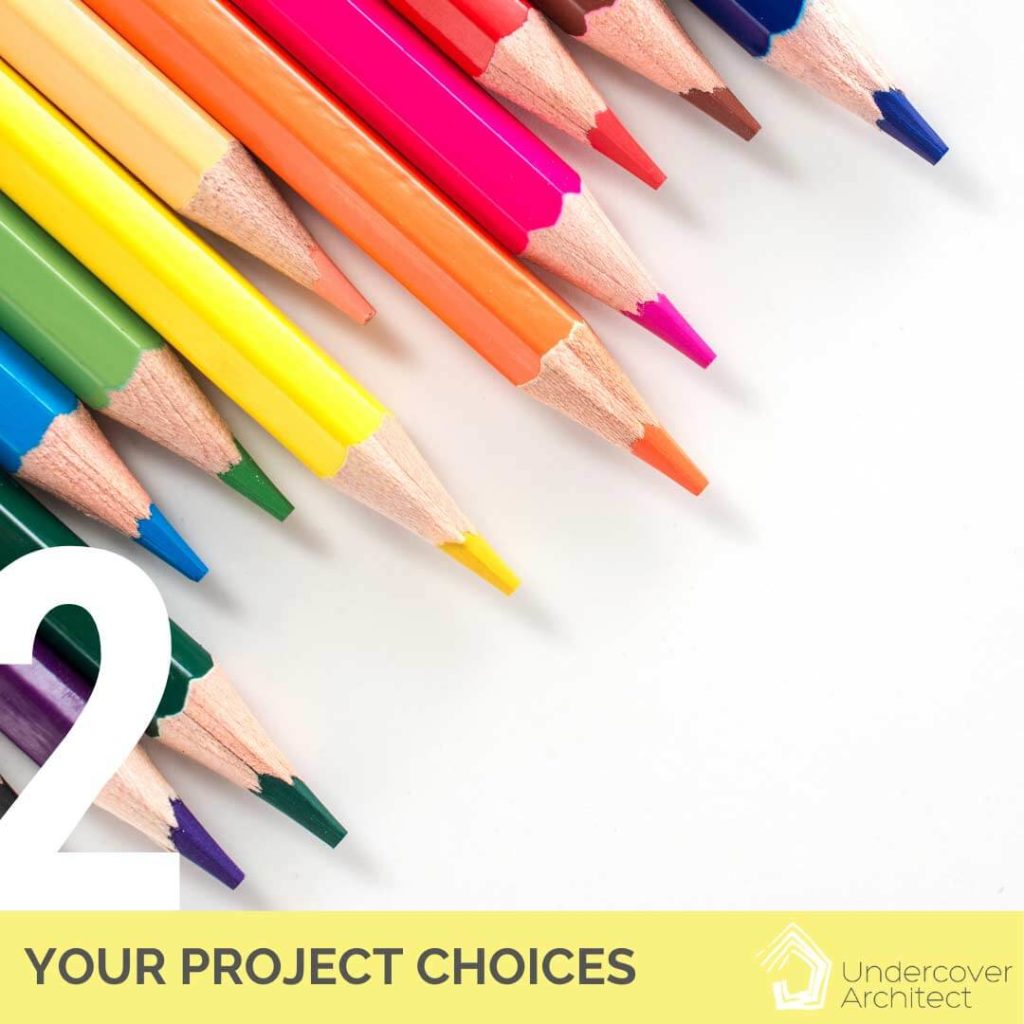
Decision fatigue
Renovating or building your home is not one big choice. It’s a series of them, and each one will lead you to the next.
Sometimes there’s 2 options to choose from. Sometimes there’s 200 (or more).
One of the biggest challenges is that you can make a couple of not-so-great choices, only to find you’re a long way down the wrong path, and it’s time-consuming, stressful and expensive to course-correct at that point.
On this journey, they say you make something like 15,000 choices when building or renovating a home (I suspect it can be even more!)
From the big decisions (like who you’ll work with and how much you’ll spend), through to the smaller decisions (like what colour should the front door be LOL!), it can be A LOT for the uninitiated.
Renovating and building is a marathon, and not a sprint. From start to finish, projects can go for two to three years, and that’s a LONG time to be making decisions and staying on top of things.
Many homeowners get to the pointy end of their project (the fun bit of deciding on finishes and fixtures and the stuff they’ve actually been looking forward to all along!!) and find they’re just exhausted by the thought of having to make another decision about something.
That’s called “Decision Fatigue”. It’s very real, and there’s some great ways to overcome this.
One is to bring forward your decision-making as much as possible. It manages risk during your build, will enable you to make choices when you have more energy and motivation, and can help you manage your budget overall.
Wikipedia says “… decision fatigue refers to the deteriorating quality of decisions made by an individual after a long session of decision making.”
See that? Deteriorating quality? So recognise that your decision-making ability may not get any better the longer you let it drag on.
Homeowners can really struggle to commit to early decisions in their projects, but it will serve you much better to make decisions before you sign your building contract.
That way, the contract sum can include the specific things you want – and you can enjoy construction without the pressure of making decisions on the run in tight timeframes.
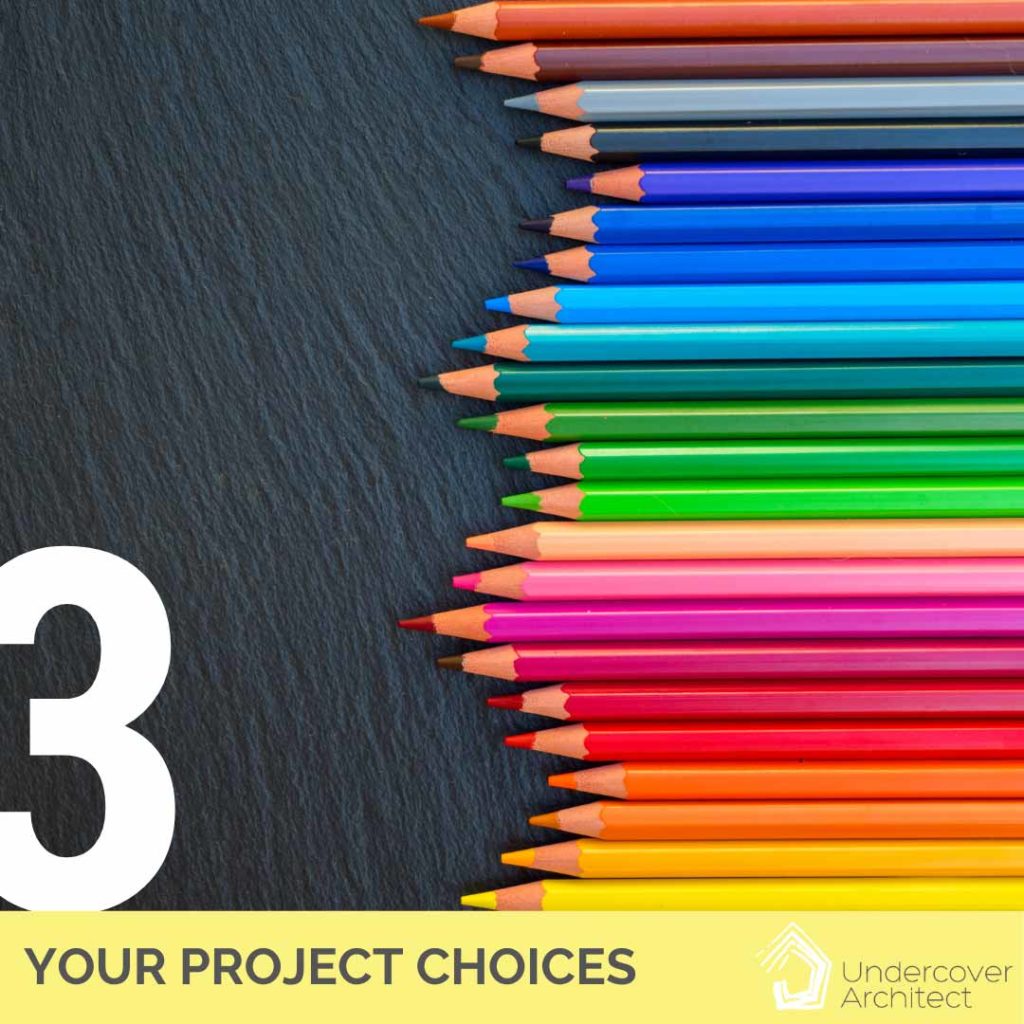
Spend your budget on project choices that have an ROI (saving stress, financial, lifestyle)
Every choice you make in your project can generally be assessed by its return on investment, or ROI.
The return may not always be financial – although many definitely are. Hiring a professional such as a designer or architect should always return more in savings or value than the cost of their fees.
Sometimes, the return may simply be in saving you stress, or protecting you against future drama or mistakes (both in and beyond your project). And some will purely be lifestyle returns in making your home feel more amazing, functional and long-lasting.
I find that some of the best project choices … the ones that make a big ROI … are related to risk management. Lowering or removing your risk of budget blowouts, nasty surprises, significant project drama or big design errors.
I think homeowners can really benefit from many of the practices used in commercial and public projects. Because in them, every choice is assessed for risk, value adding, ROI and project benefit (short and long term).
A lot of this is done very early in the project, before starting design, and then carried throughout. This may all sound like industry gobbledygook, but it’s an approach shouldn’t be limited only to the big projects worth millions.
Because chances are, you stuffing up the financial investment you’ll make in your family home will have a far more detrimental and long lasting impact on your finances and lifestyles, and be much harder to recover from, than the big corporations and government ever have to worry about.
As you make your choices, assess your investment of time, money and effort in your project carefully, and consider what your ROI is, so you don’t waste that investment unintentionally.
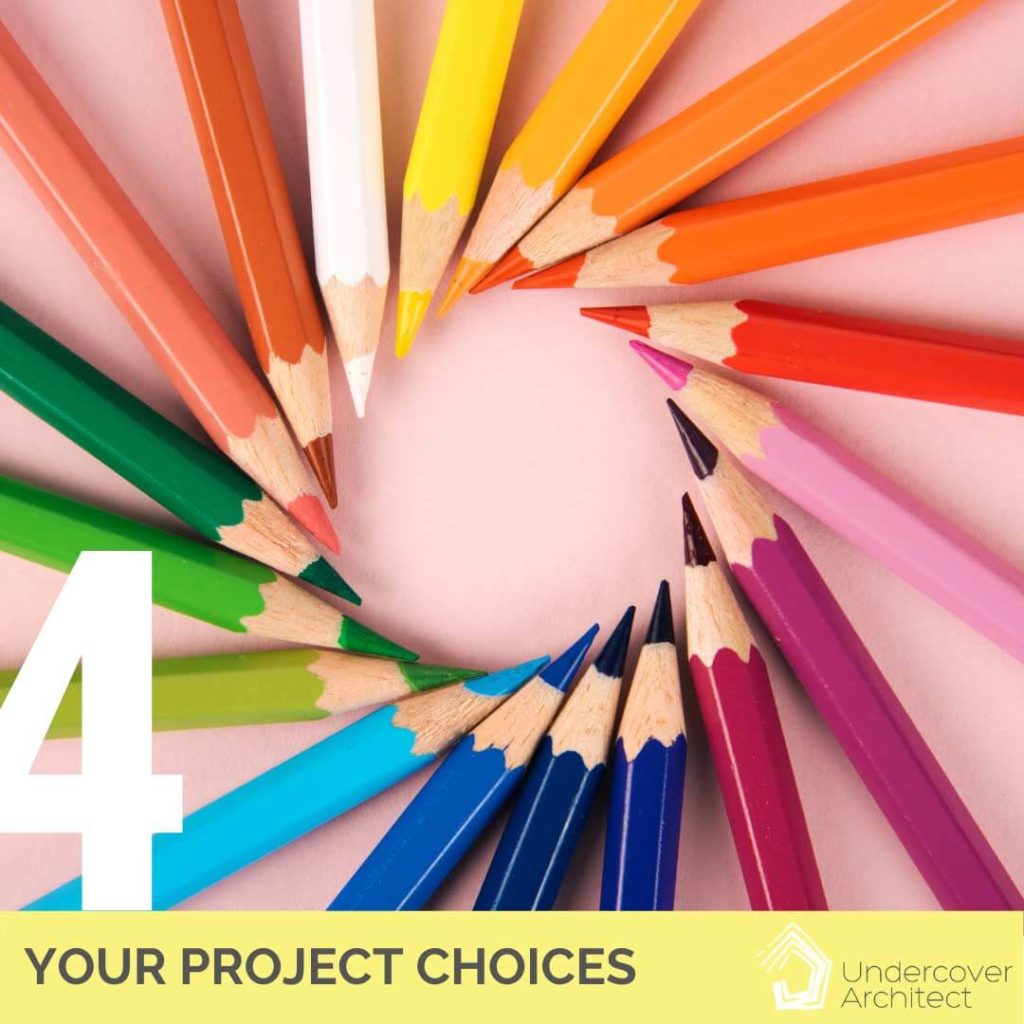
Guided by a framework
There’s a couple of things I regularly see homeowners do when they decide to build or renovate.
The first is this:
They’ll have been dreaming, thinking about their project for months. Sometimes years. Gathering their inspiration, getting ideas, and trying to envisage what would be possible once they decide to do their project.
And then they decide it’s time. And they’re like a bull at a gate, and it all has to be done yesterday. Any method or process is thrown out the window. There’s an urgency for it to be done, and they’re just going to make it happen.
(Spoiler alert: this can, and usually does, go terribly pear-shaped at some point).
The second thing I see is this:
Homeowners may move a bit slower, but they only think about their next step, once they’ve made their last. Inch by inch, step by step, they move towards their finished home. However, they lack strategy and an overview of the whole journey. And so they can often have to make steps more than once, pay extra time and money along the way, and don’t have the simplest or smoothest of journeys.
So, what’s a better way to get going, once you’ve made the choice to build or renovate?
It’s to establish a framework for your overall project journey, so you understand the steps ahead.
This will help you know whether choices can be delayed, or have some urgency. It will also help you be strategic, which can then help you save serious time and money. Some projects can be seriously streamlined when you establish what the pathway is, and you have the right team guiding you through the process.
You wouldn’t head out on a new journey to a remote destination without a good map to guide you, some research into how long you expect it to take to get there, and what you need to take along for the ride.
Renovating and building can be a two to three year process once you actually say “yes, we’re going to do this”.
Treat it like a journey to a new destination and get yourself a good map of the steps ahead, so you can avoid the wrong turns, and horrible dead-ends.
And then you can reach your destination (your finished home) actually enjoying the ride, knowing you didn’t waste time, money or effort along the way.
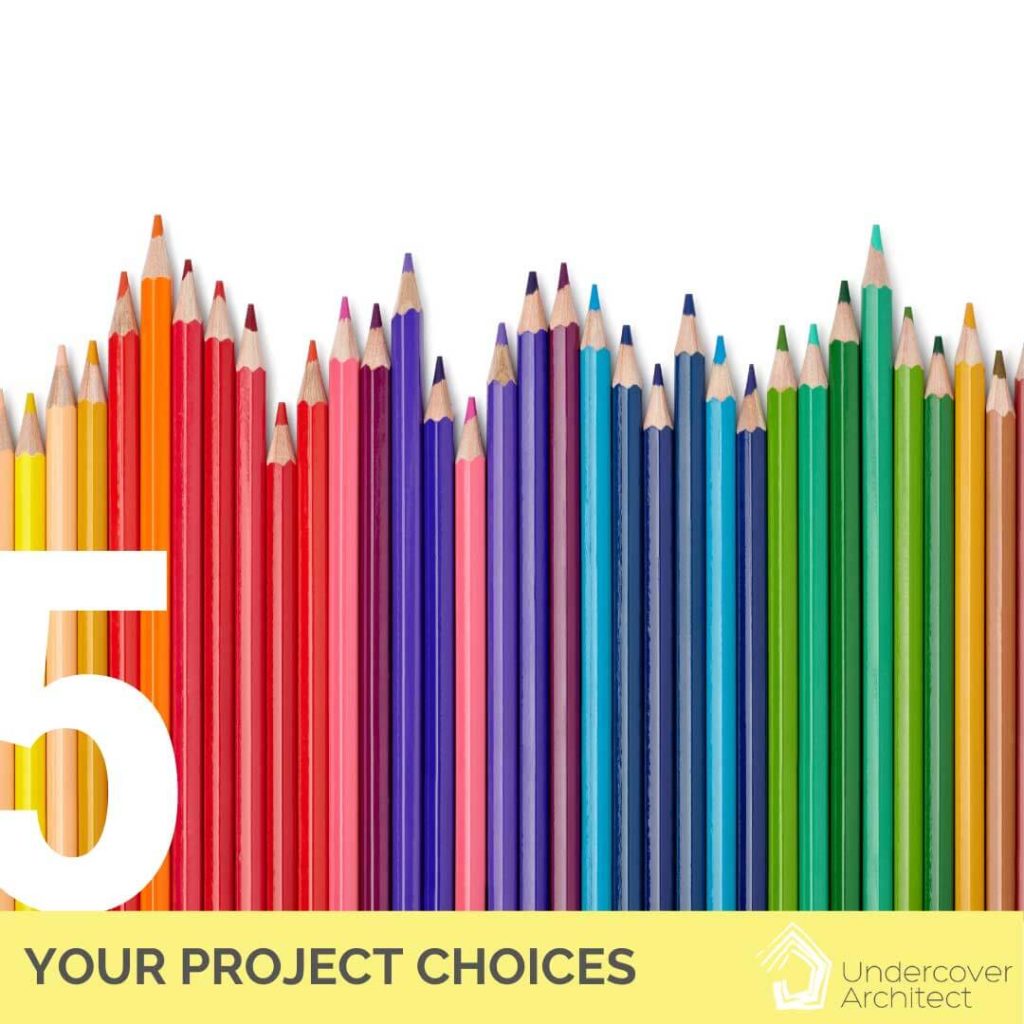
Setting goals
Given you’ll be making so many choices in your project journey, it’s essential that you have a way of sifting and filtering through all the options. Otherwise, it’s very easy to get overwhelmed and off-track.
The way I suggest to best do this, is to figure out what your big-picture goals are for your project. There are a few ways you can do this.
One is to think about what the next 5 to 10 years will look like in your life. Will you be having more kids? Will aged parents be moving in with you? Will you be working from home more? Are your kids becoming teenagers, or even moving out? What else will be going on in your life, and what plans or dreams do you have?
Then think about what you hope to gain from doing this project? Is it more space? Is it a more comfortable home? Is it a bigger yard? Is it to be closer to work or the kids’ schools? Is it purely because the house is falling down around your ears and something has to be done about it!!
And then think about your budget. Your home is a big expense, and a big part of your life. And the spend on a renovation or new build is money you could be spending on anything. So, where does this choice – this investment of funds – fit into the overall goals and vision you have for the near, medium and long term future?
Determining your overall objectives is such a useful exercise. Then, in the noise and overwhelm of all your project choices, you can revisit them, and get to helicopter view. It will give you some objectivity in those tricky times when choices seem difficult.
Time and time again, I’ve seen how powerful this is for homeowners to spend time on. Because in doing so, you’ll provide yourself a place to come back to and check in with on an ongoing basis. And you’ll create a home that’s in alignment with all the other parts of your life – so it can support you fantastically as your life rolls on.
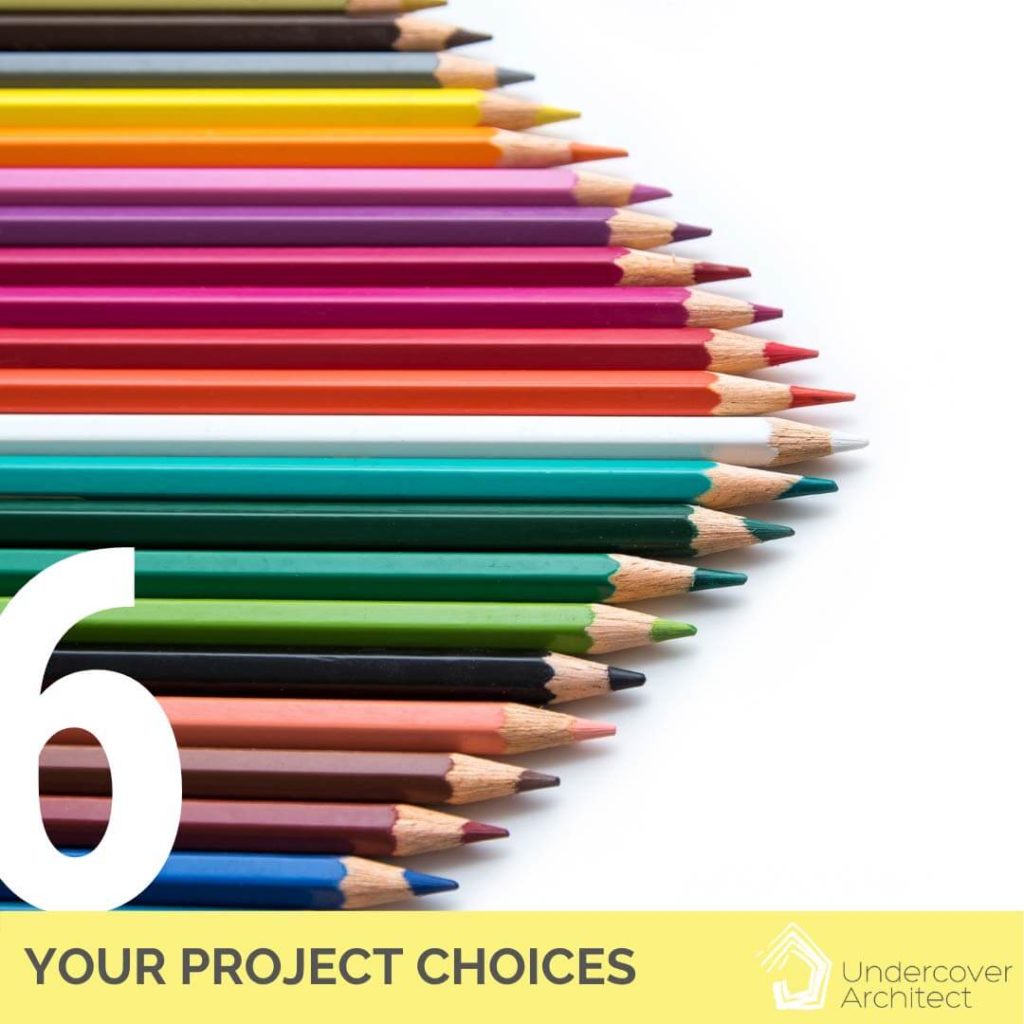
Where do you get your guidance from?
If you’re making project choices without the support of industry professionals, then where are you getting help and guidance from?
Many turn to their builder for advice on all project choices. However, that can be problematic. Whilst there are amazing builders in the industry, I’ve seen some cause their clients huge headaches because they’re not up to date with town planning changes, code reviews, product updates or industry info.
Others rely on their designer or draftsperson, and this can also be challenging. Many draftspeople have very little legal liability. Some designers are self-trained, and again, don’t have much legal liability in what they recommend and endorse.
Interior design is an unregulated industry, so always check the qualifications and background of the interior designer you’re working with. Some are awesome at styling and creating ‘a look’ but don’t have much knowledge about the performance of materials or longevity of the fixtures they’re specifying (or the risk they may be exposing you to).
For any professional you’re using, be sure to check their credentials, experience, liability, insurance, the projects they’ve done that are like yours, and how other clients have found them to work with. And if they say they’re an architect, confirm they’re a registered architect. It’s illegal to say you’re an architect unless you’re registered.
Lastly, if your source of guidance is free Facebook groups or well-meaning friends and family, this can be super risky. They can definitely make the decision-making process worse.
Knowledge is often limited to one (or even a few) projects, and so they don’t know what they don’t know. Some of the advice handed out online (even though it is well intentioned) seriously shocks me, and will cause such dramas, and even legal ramifications, for those that follow it.
Tap into sources of guidance that have loads of professional industry experience. Look for those who also have a professional responsibility to the quality of their guidance, and are sharing from industry knowledge spanning years (and decades) and many (many, many) projects.
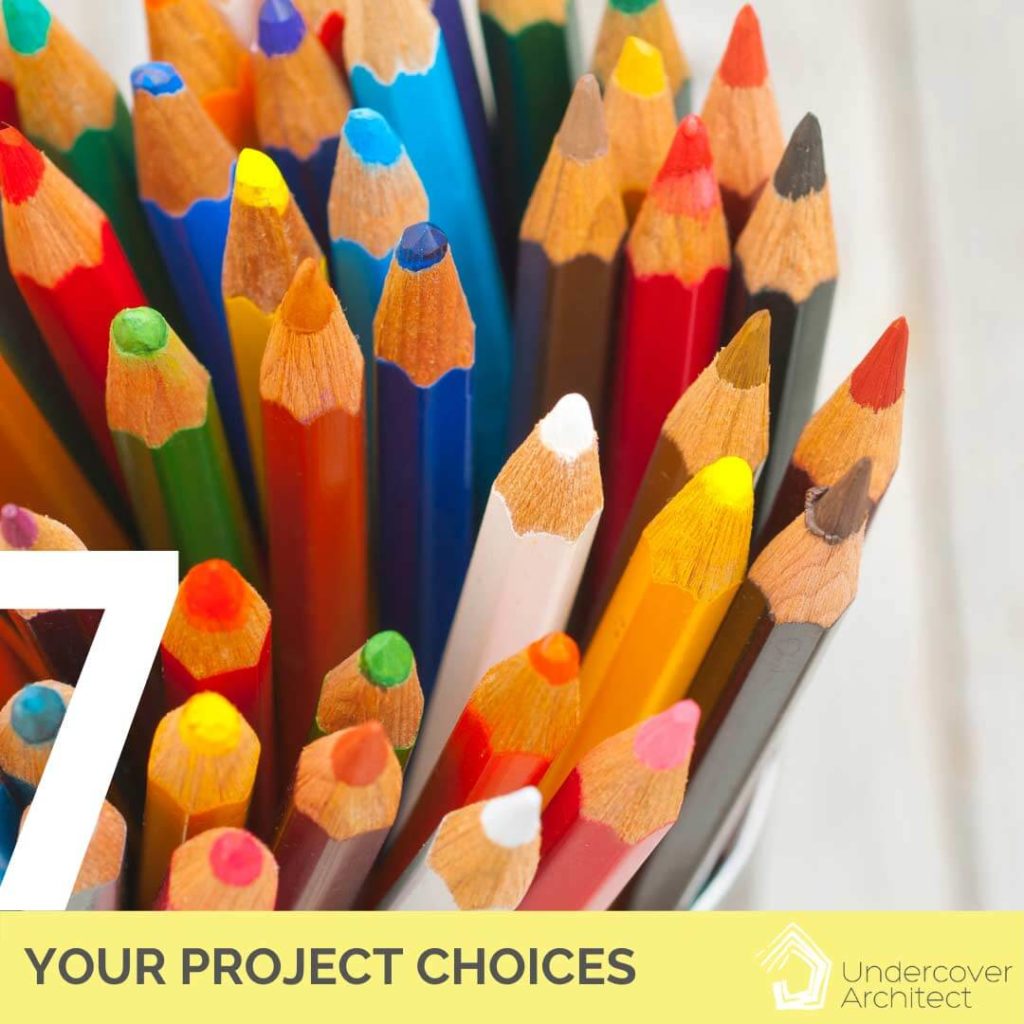
Compromises vs Priorities
I think homeowners sometimes imagine that there is one solution for their perfect home. The one design that will tick all the boxes. And that the journey is about getting there, and if their budget can’t stretch that far, they’ll just have to compromise and cut until they can afford the result.
However, my experience with design is that there are always a multitude of options available. There’s no such thing as the perfect home. Only the perfect home for you.
Something I’ve observed from my 25+ years of work with homeowners is this:
The ones who have a great experience in renovating and building get clear on figuring out their priorities, and determining their order.
They then make choices based on what they value most, and in doing so, hone the design towards the best outcome to meet those priorities.
Because a home is perfect for you when it suits your site, your lifestyle AND your budget.
When this doesn’t go well, is where homeowners treat their project choices like a process of elimination. They see it any choice they can’t have means their dream vision is getting watered down, and each further choice feels like compromise.
Constraint is a huge creativity boost. Priorities provide you with constraints that can unleash great opportunities in your design and project.
Lazy design (and deep pockets) can create terrible results where homes simply don’t work hard for your money, or for you.
So what is most important to you? What will your priorities be?
It’s very human to want it all. But a trade off isn’t necessarily a negative thing. It can create the most fantastic of homes, and often the smallest changes can create huge transformation.
A home that’s sustainable, functional, flexible and fun to live in. That gives you bang for buck, helps you be the best version of yourself, and sells well and quickly when the time comes to move on.
Figure out the order of YOUR priorities – it’s a great way to streamline your project choices, and ensure you’re creating the perfect home for you.

Be your own hero shot
This is potentially going to sound strange, but it’s something I’ve only had the benefit of noticing since we moved to our home in the Byron Hinterland around 7 years ago, and I thought I would share.
See, where I live, it’s 20 or so minutes to the nearest ‘town’. And even those towns are pretty low-key in terms of retail and density. Billboards are almost non-existent, and it’s very easy to drive around where I live without being exposed to advertising much at all.
And so, when you step back into the world of advertising, retail and commercialism, you notice just how much we’re bombarded with images and messages about all the things we ‘need’ to have to make our lives complete. To make us complete.
I’m very fortunate that I don’t live with this everyday. Because when you do (and I remember it being like this when I did), it’s amazing how much it sinks in. It’s almost like you numb yourself to just how much you’re being sold to … but the messages it’s sending you still impact your choices.
Renovating and building, of course, does this too. In a marketplace of heavily styled images and hero shots, it’s very easy to lose perspective on what home creation is actually all about.
I heard Lucy from @huntingforgeorge speak at the @renoanddesignshow about how she’s seeing a trend of people designing to create their own ‘hero’ shots in their homes. Those specifically styled spots in their home that look ‘just so’ for a photo they can share on instagram.
Instead, be your own hero shot.
Creating a home is a beautiful opportunity to shape your own haven. A sanctuary that protects and shelters you, helps you relax and restore, and is a place for all you hold dear and special.
And it’s also a chance to shape an environment that represents you. Your tastes. Your style. Your favourite colours, textures and items. YOU. In a way that may never photograph well, but when you settle into it at the end of each day, it’s in alignment with what you value, and what you want to tell the world matters to you.
Don’t fall for the hype. Ignore the billboards. You are enough. Your home is enough. However you choose to make it beautiful and yours.
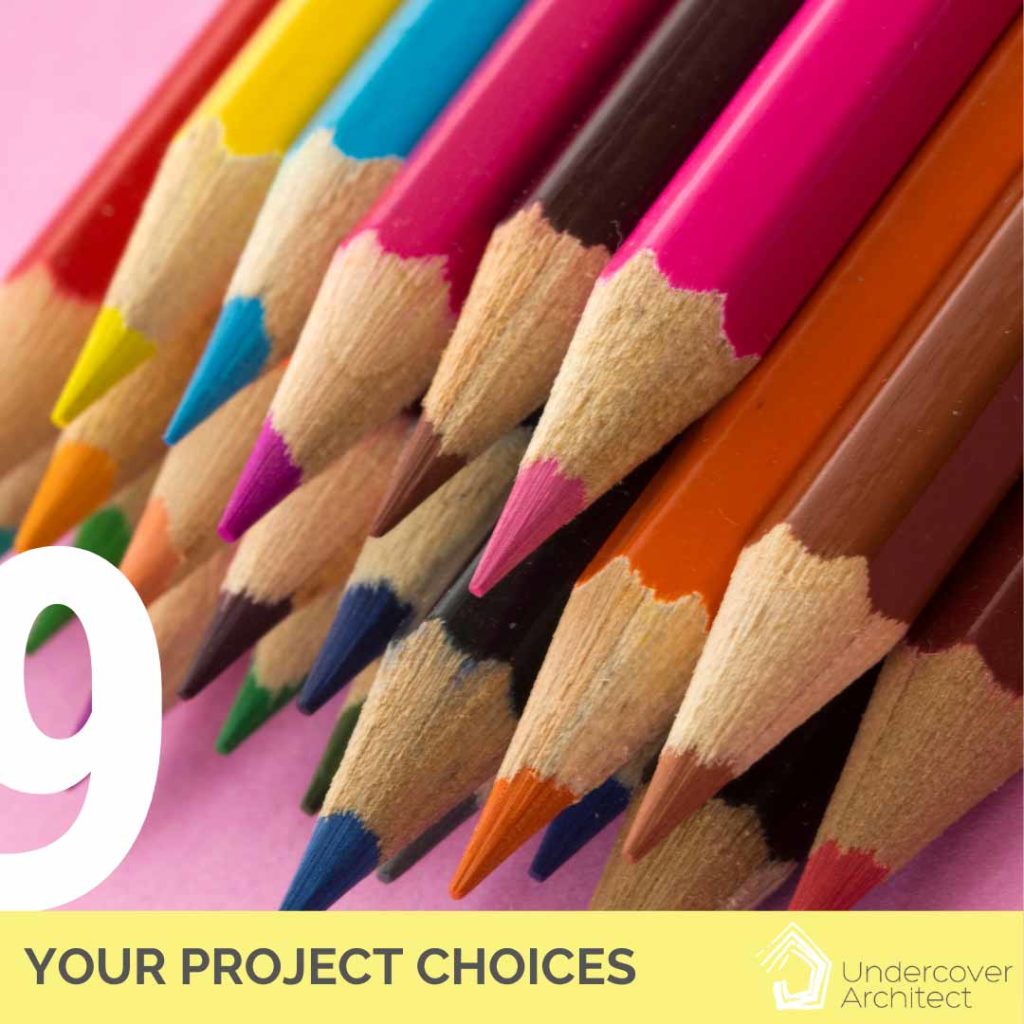
It starts with you
You may have heard me say this before: “You unlock what’s possible for your future home”. So what do I mean by this?
What I mean is that it all starts with you.
You’re the one who …
>> decides you’ll renovate or build
>> chooses who you’ll work with
>> creates the list of wishes and wants for your future home
>> figures out what you’ll spend money on to make it all happen
And in doing so, YOU are the one who is choosing what is important to you, what you value, and what matters.
Maybe it’s sustainability. Maybe it’s about a great, functional design. Maybe it’s doing something that’s small and compact. Or maybe it’s creating the home you’ve always dreamed of.
It all starts with you.
And yet, so many homeowners enter their project like the power belongs to someone else. They make themselves beholden to others, and forget their agency. And they don’t educate themselves, or get the expert support and guidance they need to stay in control, and make confident choices throughout their project journey.
Don’t give your power away.
As a consumer, you have HUGE power in the spending decisions you make in any industry, and especially home building and renovating.
I don’t know about you … but I know I’m sick of waiting for the government to get its act together and increase the star rating for our energy efficiency requirements. We’ve had 6 stars for over 10 years now. Meanwhile, energy has doubled in cost, and the climate crisis has got worse.
I’m sick of waiting for developers and builders to create projects across the board that are well-designed, well-built, sustainable, and fantastic places to live for all.
We have been beaten down to accept a very low standard of quality and design when it comes to our homes. The Australian Standards and Building Codes are all the bare minimum – they are not the exemplar of what a great home should look like.
Take your power back. Demand better. Because it exists and you can access it when you know how.
That’s exactly why Undercover Architect exists. To help you unlock what’s possible for your future home.
It starts with you, and the choices you make.
FOR MORE ON PROJECT CHOICES AND REAL LIFE RENOVATING AND BUILDING:
This episode will help you learn the unexpected blindside of renovating and building your family home (and why it’s like having children). You can listen here >>> HOW TO MANAGE YOUR RENOVATION OR BUILDING PROJECT
IMAGE SOURCES:
Images are sourced from Canva.
 With over 30 years industry experience, Amelia Lee founded Undercover Architect in 2014 as an award-winning online resource to help and teach you how to get it right when designing, building or renovating your home. You are the key to unlocking what’s possible for your home. Undercover Architect is your secret ally
With over 30 years industry experience, Amelia Lee founded Undercover Architect in 2014 as an award-winning online resource to help and teach you how to get it right when designing, building or renovating your home. You are the key to unlocking what’s possible for your home. Undercover Architect is your secret ally
We are feeling so overwhelmed with our renovation project. We had engaged an architect but sadly they failed to listen to our needs and ideas. We have now engaged a draftsperson who has provided 2 plans – one to raise the house and one to extend.
Really not sure who to turn to for guidance.
Raising the house will mean keeping landspace but will result in a huge cost and far too big house. Extending the house means a loss of our beloved yardspace and a fear we will “outgrow” the home when our kids are teenagers.
Hi Emily,
Thanks for your comment and your feelings are common. In my experience, it would be worthwhile doing some more investigative work yourself, getting clearer on your priorities, your budget, the assets of your site, the things you love and don’t love about the existing home, the neighbouring homes etc. Because then I think you’ll gain great clarity into what your needs are, plus what your priorities are as well.
I’ve worked with homeowners many years ago who were able to raise and rebuild for a similar price to extending the home, because they were willing to keep their footprint compact in the process as well. I’ve worked with homeowners who wanted to raise and rebuild, but we ended up extending instead, because their site was south-to-rear, and extending meant we could create a solution that actually got northern light into the home (which dramatically improved the quality of home, even though it took up some yard space).
When you get really clear on what you want, and what your budget, your site and your future lifestyle calls for – and then you work with someone who’s guidance and opinion you can really trust and rely upon (which may not be the case in your scenario), the way forward becomes much clearer.
I’d suggest checking out the first two seasons of the podcast (head to this page for the full index and scroll to the bottom for Season 1 and Season 2 episodes). You could also check out my mini-course, “Get Started Guide‘ for more help too.
Best wishes for your project,
Amelia, UA